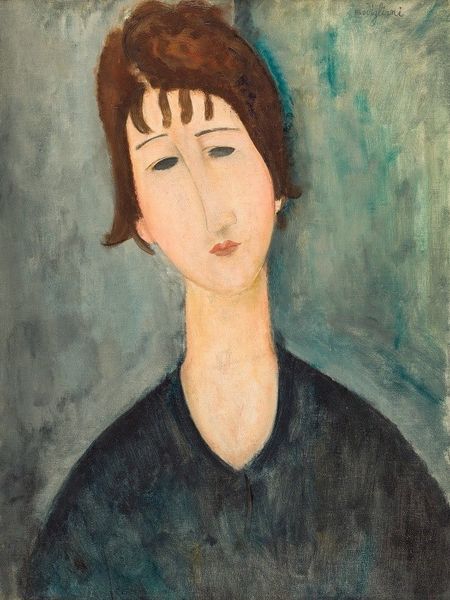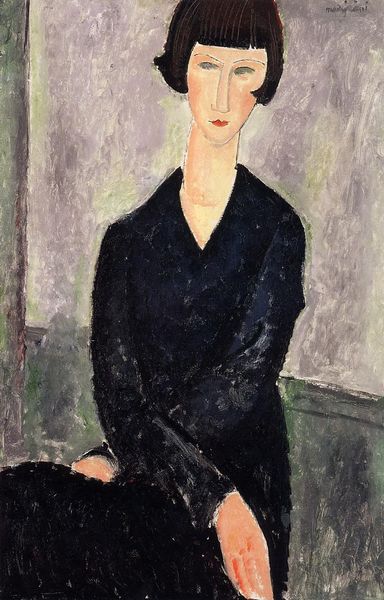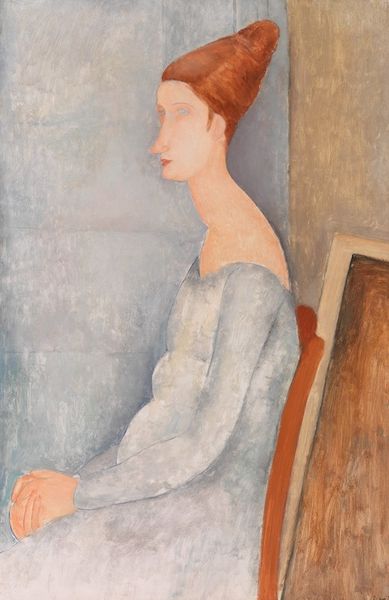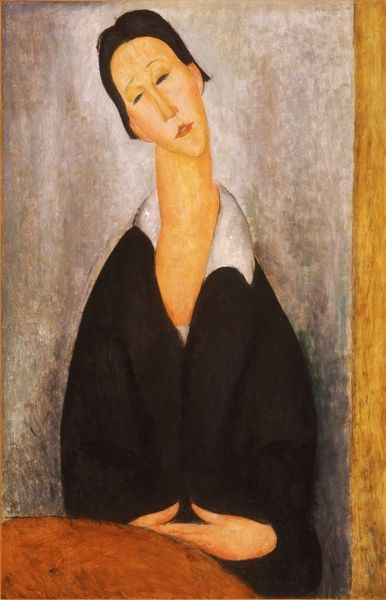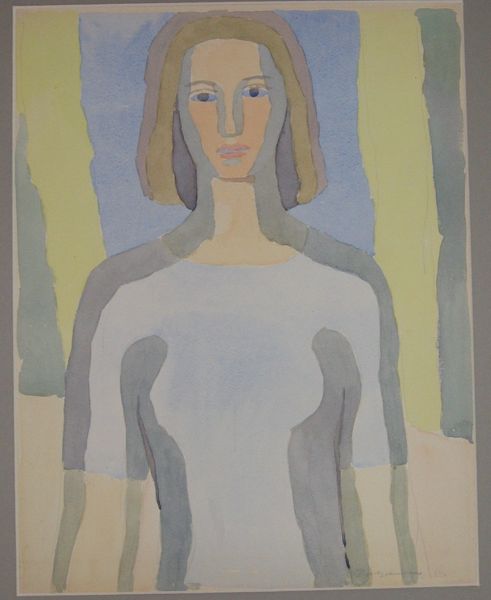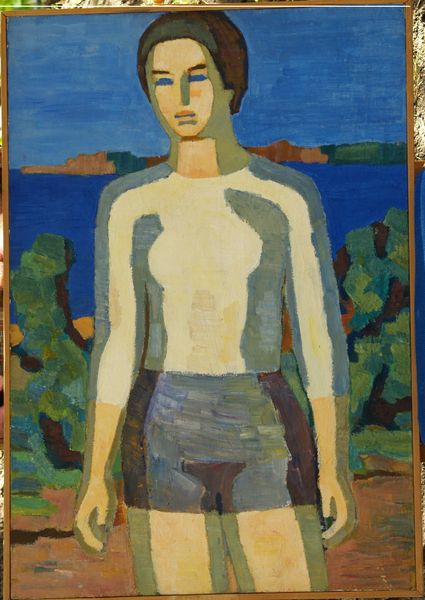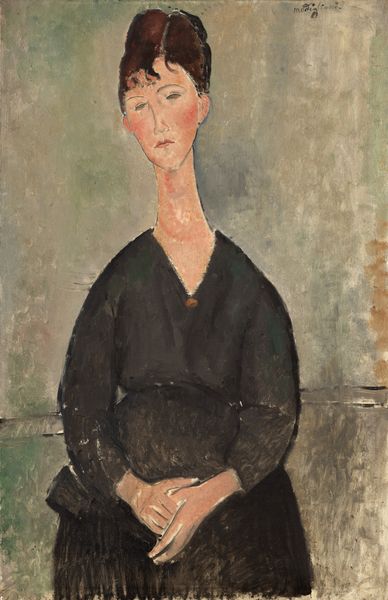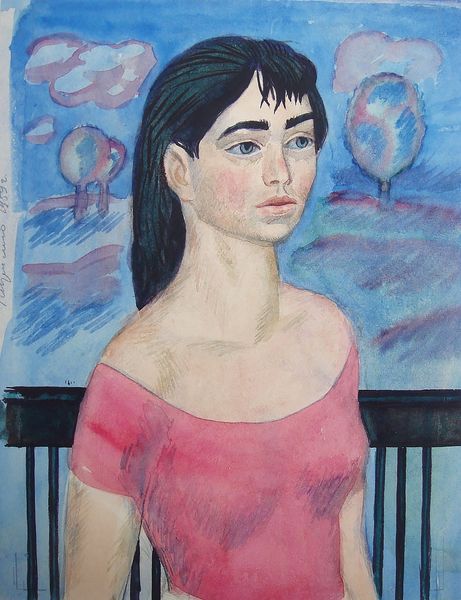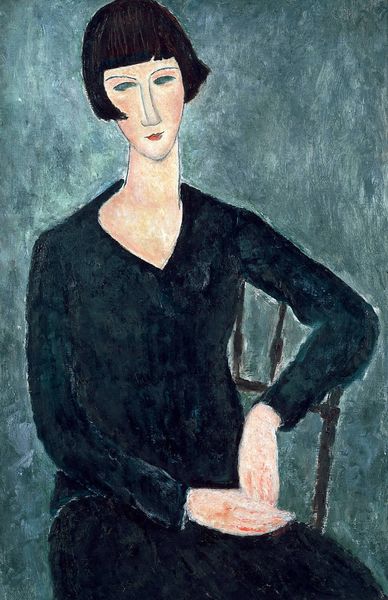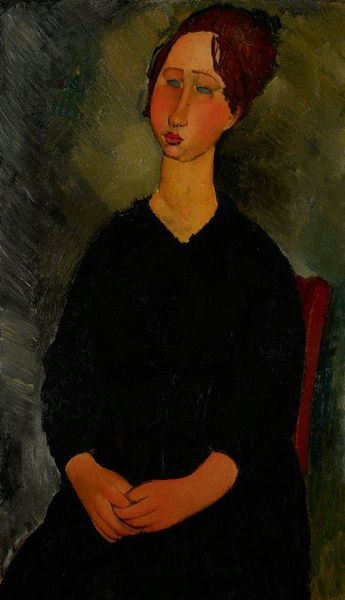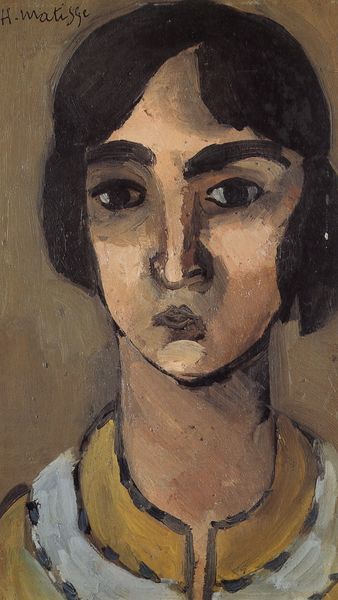
painting, watercolor
#
portrait
#
painting
#
landscape
#
figuration
#
watercolor
#
intimism
#
realism
Copyright: Hryhorii Havrylenko,Fair Use
Editor: Here we have Hryhorii Havrylenko's "Female Image On Landscape Background" from 1950, a watercolor painting. There's a striking contrast between the figure and the landscape that makes the person the focus. What are your initial thoughts on this work? Curator: Well, immediately I’m drawn to the way Havrylenko utilizes watercolor. It's interesting how the translucence is employed not just to depict the landscape, blurring it, almost as an ethereal backdrop, but also in shaping the female figure. Considering its materiality, do you think it speaks to a specific artistic or cultural context? Editor: That’s interesting, I hadn’t thought of that. Maybe its portability or its affordability made it more accessible? Curator: Precisely. The use of watercolor, a less valued medium historically, might challenge the established hierarchies within art. The question of 'craft' versus 'high art' becomes pertinent. Did Havrylenko consciously choose this material to comment on the accessibility and democratisation of art, perhaps in a post-war context where resources were limited? Or were the landscape and the female image chosen because of their cultural value and demand? Editor: That's a perspective I hadn't considered. So you're saying the very materials used influence how we understand the artwork's place in the broader art world? Curator: Exactly! Furthermore, consider the landscape, a common motif readily available, combined with a figure—was this combination dictated by material accessibility, available resources and patronage, or the socio-political desire of the moment? The hand itself looks deliberate, maybe acting as a protective gesture or warding something off. What raw material might have been used to prime the watercolor? Editor: I am walking away from this discussion today with many thoughts around value in material and the choices we make as people both viewing, and using, the materials. Thank you! Curator: And I find myself rethinking the artist's purpose during and after political upheaval, a perspective I am sure to use again.
Comments
No comments
Be the first to comment and join the conversation on the ultimate creative platform.
